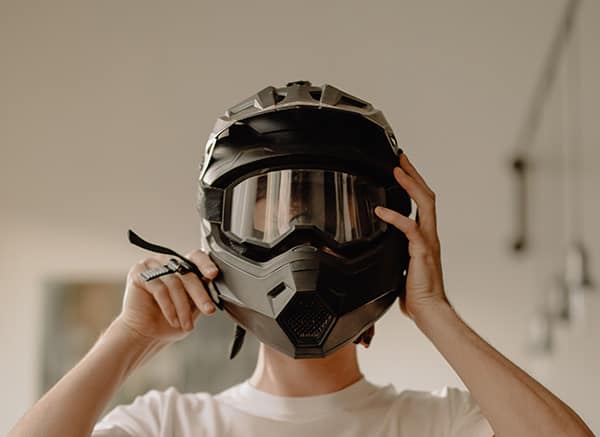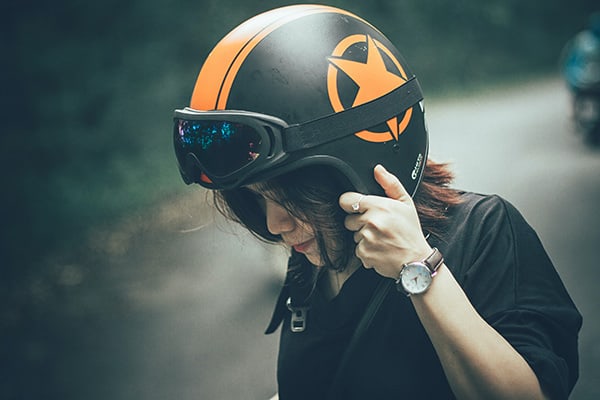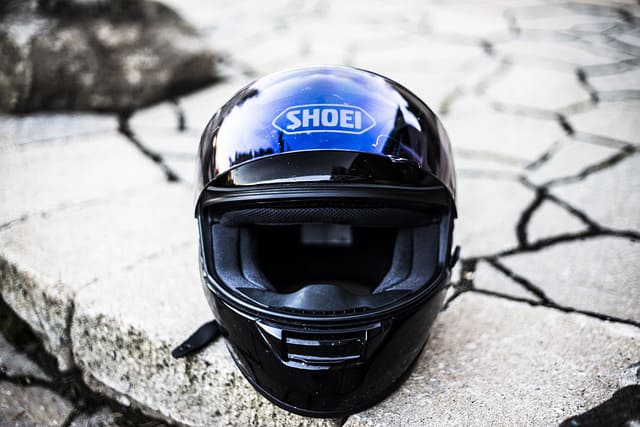The Perfect Fit: How to Make Your Motorcycle Helmet More Comfortable

Motorcycle helmets come in a variety of shapes, sizes, and designs. Their primary function is to provide protection to your head in case of an accident, minimizing the risk of severe injuries. Beyond safeguarding, helmets can also enhance your riding experience by reducing wind noise and protecting your eyes from dust and debris. Despite their significance, many riders struggle with finding a helmet that offers maximum comfort and safety. This article aims to be your definitive guide on how to achieve the perfect fit for your motorcycle helmet.
Understanding Helmet Fit and Importance

Helmet fitting is not just about size; it also involves the shape of your head. Everyone has a unique head shape, which can be categorized as round oval, long oval, intermediate oval, or variations in between. Your helmet should match your head shape for a snug fit.
A well-fitted helmet provides much-needed protection during unfortunate accidents. If the helmet is too tight, it can cause discomfort, headaches, and distractions on the road. If it’s too loose, it won’t effectively cushion your head during an accident, leading to potential injuries. Therefore, knowing how to adjust your motorcycle helmet for a better fit is crucial. Before we delve into how tight should a motorcycle helmet be, let’s first understand what constitutes a ‘right fit.’ A correctly fitting helmet should feel snug around your entire head and face. There should be no spaces between the padding and your skin, and it should not put undue pressure on your head.
When you move your head quickly, the helmet should move with it, rather than sliding around on your head. Additionally, the helmet should sit low on your forehead, and the visor should not obstruct your field of vision. Remember, a helmet that feels slightly tight when new is usually the right fit, as the padding will compress over time. However, if you feel any discomfort or pain, it’s a sign that the helmet is too small.
Determine Your Headshape
Determining your head shape is the first step towards a better-fitting helmet. You can do this by looking at your head’s shape in the mirror or asking someone else to observe it from above. There are three primary head shapes:
- Round Oval: The length and width of your head are nearly the same.
- Intermediate Oval: Your head is slightly longer than it is wide.
- Long Oval: Your head is noticeably longer than it is wide.
Understanding your head shape will guide you towards the right helmet, as different brands cater to different head shapes.
Measuring Your Head
After identifying your head shape, the next step is to measure your head’s size. You’ll need a soft tape measure for this. Wrap the tape around the widest part of your head, approximately one inch above your eyebrows. This will give you the circumference of your head, which corresponds to the helmet size. Remember, helmet sizes can vary between brands. Therefore, always refer to the specific size chart provided by the helmet manufacturer.
Trying on Different Helmets
Now that you have your head measurements and shape, it’s time to try on different helmets. Visit a store with a wide range of options and spend time trying on various helmets. A good helmet should feel snug but not tight. It should be comfortable, with no pressure points. Keep the helmet on for at least 10-15 minutes to see if any discomfort arises. If you start feeling a headache, the helmet is probably too tight.
Different brands cater to different head shapes. For instance, AGV helmets are wider at the back, making them suitable for egg-shaped heads. Shoei caters to long oval heads, whereas Arai is suitable for round oval heads. HJC helmets are generally versatile, fitting most head shapes.
How Tight Should a Motorcycle Helmet Be?

How tight should a motorcycle helmet be? Your helmet should be tight enough to stay put when you shake your head violently, but not so tight that it causes discomfort or pain. The cheek pads should press against your cheeks without causing you to bite your cheeks. You should be able to fit a finger between the helmet interior and your forehead, but not more than that.
Another test you can use is the rotation test. Try to rotate the helmet side to side. If it moves freely, it’s too loose. It should only move a little, with the skin of your forehead moving with it. Remember, the helmet will loosen a bit over time as the padding compresses. So, it’s better for it to be slightly tight than loose when new.
Steps on How to Put on a Motorcycle Helmet Correctly
Knowing how to put on a motorcycle helmet correctly is as crucial as finding the right fit. First, hold the helmet straps and pull them apart. Lower the helmet onto your head, ensuring it sits straight and just above your eyebrows. Next, fasten the straps securely but comfortably. You should not be able to pull the helmet off from the back or the front. If you can, the helmet is too loose. Lastly, check the fit by trying to insert your fingers between your forehead and the helmet. If you can fit more than a finger, you need to adjust the size or padding.
Tips to Make Your Motorcycle Helmet More Comfortable

Even after getting the right fit, you might still experience some discomfort. Here are some tips to make your motorcycle helmet more comfortable:
| Step | Instructions |
|---|---|
| Break-in period | A new helmet can feel tight. Wear it for short periods initially and gradually increase wear time. |
| Adjust padding | If the helmet feels too tight in some areas, try adjusting the padding. |
| Wear a helmet liner | Use a liner to absorb sweat, prevent chafing, and keep your helmet clean. |
| Choose the right shape | Select a helmet that matches the shape of your head for maximum comfort. |
| Focus on cheek pads | Cheek pads should be in line with your cheekbones, pushing your cheeks up firmly. |
| Check helmet position | The helmet should sit low on your forehead, just above your eyebrows, with no gaps or pressure points. |
| Chin strap adjustments | Adjust the chin strap tight enough that only one or two fingers can fit between the strap and your throat. |
| Replace the helmet | If after all these adjustments, the helmet still doesn’t fit right, it might be the wrong size or shape for your head. In this case, it’s best to replace the helmet with a better-fitting one. |
Common Problems
- Helmet is too tight: Try a larger size, or adjust/remove some padding.
- Helmet is too loose: Try a smaller size, or add some padding.
- Helmet lifts at high speed: This is a sign of a loose fit. Try a smaller size.
- Pressure points causing discomfort: The helmet shape may not be right for your head. Try a different model or brand.
Expert Advice on Motorcycle Helmet Comfort and Safety

Experts advise not to compromise on your helmet’s fit and comfort. A comfortable helmet is not just an enjoyable helmet; it’s a safer helmet. Discomfort can cause distraction, and a distracted rider is a danger to themselves and others on the road. When choosing a helmet, give priority to fit and comfort over aesthetics. Safety should always be your primary concern. Remember, the most expensive helmet is not necessarily the best or the most comfortable one.
The right helmet will not only protect you during accidents but also enhance your comfort while riding. So, spend some time understanding your head shape, measuring your head size, and trying on different helmets. And remember, if your helmet doesn’t fit quite right, don’t hesitate to make necessary adjustments or replace it with a better-fitting one. Because when it comes to your safety, every detail matters.
FAQs
Why does my motorcycle helmet hurt my head?
There are several reasons why a motorcycle helmet may cause discomfort, including incorrect size, improper fit, pressure points, or inadequate padding. It’s important to ensure you have the right size and fit for your head shape to maximize comfort.
Can you add padding to a motorcycle helmet?
Adding padding to a motorcycle helmet is not recommended as it can affect the helmet’s safety and compromise its structural integrity. It’s best to choose a helmet that provides a proper fit without the need for additional padding.
How do you break in a motorcycle helmet fast?
Breaking in a motorcycle helmet takes time, but you can expedite the process by wearing the helmet for shorter periods initially, adjusting the fit using any available mechanisms, and gently manipulating the padding to conform to your head shape. Avoid excessive force or using heat sources.
How can I make my helmet more snug?
To make your helmet more snug, you can adjust the retention system, such as the chin strap or any fitment mechanisms provided. Ensure that the helmet is secure and does not move excessively, but avoid making it too tight to the point of discomfort or compromising circulation.
Is it better for a motorcycle helmet to be tight or loose?
A motorcycle helmet should fit snugly but comfortably on your head. It should not be too tight to cause discomfort or pain, nor should it be too loose to move around or compromise its stability. A proper fit is essential for optimal safety and protection.
How long does it take for a motorcycle helmet to break in?
The break-in period for a motorcycle helmet varies depending on the individual and the helmet itself. It can take several hours or even a few weeks of regular use for the padding to adjust and conform to your head shape. Patience and consistency are key during this process.
Should my chin touch my motorcycle helmet?
When wearing a properly fitted motorcycle helmet, your chin should be comfortably positioned inside the chin bar. However, it should not be pressing against the helmet, causing discomfort or restricting your ability to breathe. There should be enough space for you to open and close your mouth comfortably.
Is it normal for a new helmet to be tight?
It is normal for a new helmet to feel snug initially as the padding and materials need time to adjust to your head shape. However, it should not cause excessive discomfort or pain. If the tightness persists or becomes unbearable, you may need to consider a different size or helmet model.
- Tackling the Fear of Motorcycles: A Must-Read for Every Rider - April 25, 2024
- Motorcycle Lost All Electrical Power While Riding - December 10, 2023
- Motorcycle Safety Tips for New Riders - November 23, 2023




